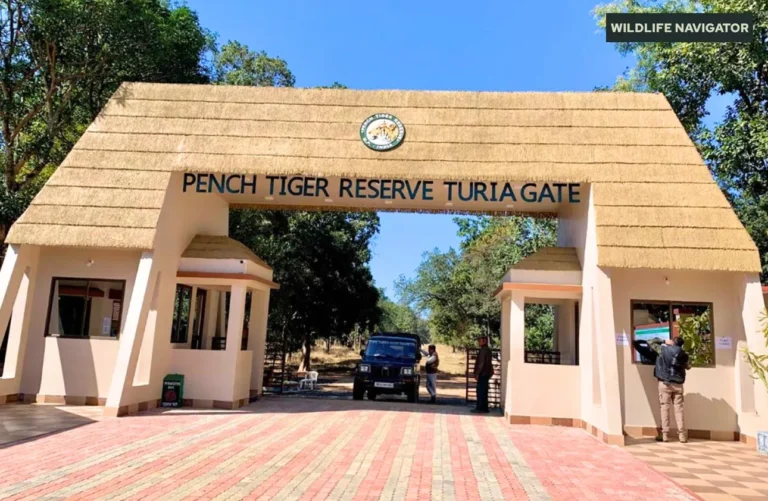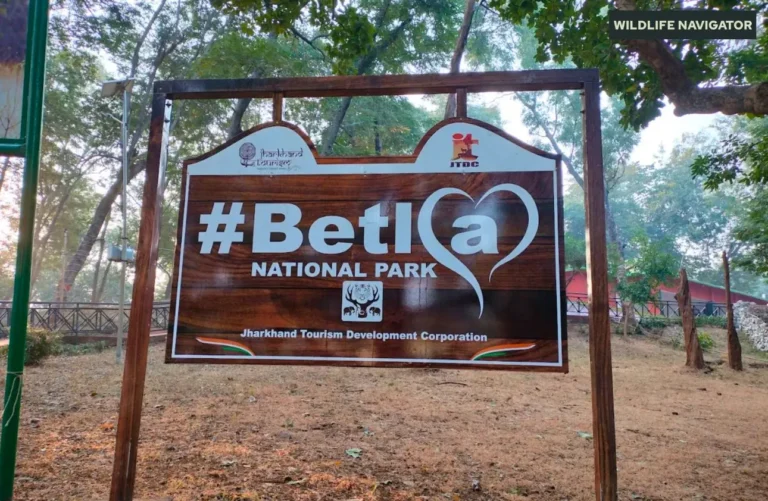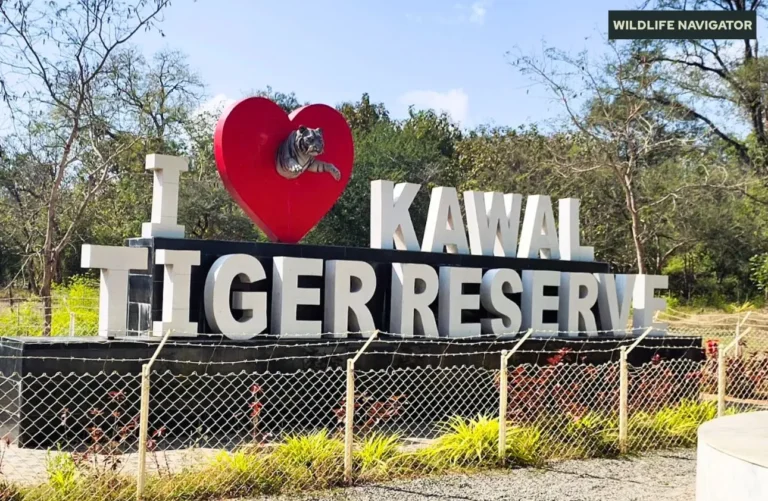National Zoological Park | Delhi Zoo | Animals, Attractions & Visitor Guide

The National Zoological Park, commonly known as Delhi Zoo, is one of India’s premier wildlife destinations, attracting thousands of visitors every year. Located in the heart of India’s capital, near the historic Purana Qila (Old Fort), this sprawling zoo covers an area of approximately 176 acres, providing a naturalistic habitat for a wide variety of animals, birds, and reptiles.
Established in 1959, the National Zoological Park was designed not only to showcase India’s rich biodiversity but also to promote wildlife conservation, research, and education. The zoo is famous for its open-style enclosures that allow visitors to observe animals in environments closely resembling their natural habitats, a design inspired by the Carl Hagenbeck method, which uses moats and natural barriers instead of traditional cages.
The park is home to some of the rarest and most exotic species in India, including the majestic Royal Bengal Tiger, Asiatic Lion, and One-Horned Rhinoceros, along with a diverse collection of birds, reptiles, and mammals. Beyond being a tourist attraction, it serves as an important centre for conservation breeding programs and ecological awareness, making it a perfect destination for families, wildlife enthusiasts, students, and researchers alike.
A visit to the National Zoological Park is not just about seeing animals—it’s a journey into India’s wildlife heritage, where every corner of the park tells a story of biodiversity, conservation efforts, and the wonders of the natural world.
History & Establishment
The National Zoological Park in Delhi has a rich history that reflects India’s commitment to wildlife conservation and education. It was officially established in 1959 by the Government of India with the primary goal of creating a sanctuary for rare and endangered species while also providing an educational and recreational space for the public.
Unlike traditional zoos with cages and enclosures, the Delhi Zoo was designed following the Hagenbeck system, pioneered by the German animal expert Carl Hagenbeck. This approach emphasized naturalistic habitats, open enclosures, and moats instead of iron bars, allowing animals more freedom of movement and giving visitors a more authentic viewing experience. This design was revolutionary at the time and set a benchmark for modern zoos across India.
Over the decades, the National Zoological Park has played a pivotal role in conservation programs, particularly for endangered species such as the Asiatic Lion, Royal Bengal Tiger, and One-Horned Rhinoceros. The zoo has also been instrumental in breeding programs for birds, reptiles, and smaller mammals, helping to maintain ecological balance and genetic diversity.
The park’s establishment was not just about creating a recreational space—it was a step toward raising public awareness about wildlife protection, educating generations about the importance of preserving India’s rich biodiversity. Today, the National Zoological Park stands as a symbol of India’s efforts in wildlife preservation, blending history, science, and leisure in one green, vibrant space.
Geography & Layout of the Zoo
The National Zoological Park is strategically located near Purana Qila in central Delhi, making it easily accessible from almost all parts of the city. Spanning approximately 176 acres, the zoo is one of the largest urban wildlife sanctuaries in India, offering both residents and tourists a green escape from the bustling city life.
The park is thoughtfully divided into multiple zones and sections, each dedicated to different types of animals. Visitors can explore areas specifically designed for mammals, reptiles, birds, and aquatic species, ensuring a comprehensive wildlife experience. Wide, tree-lined walking paths guide visitors through the park, creating a natural flow and making it easy to navigate.
One of the most notable features of the zoo is its landscape and naturalistic design. Rolling lawns, artificial lakes, and dense foliage mimic the habitats of various species. Animals live in open enclosures with moats, rock formations, and water bodies, allowing them to behave naturally while providing visitors with unobstructed views. This design philosophy not only enhances the visitor experience but also prioritises animal welfare.
Additionally, the zoo incorporates eco-friendly features, including shaded rest areas, drinking water points, and designated observation decks. This thoughtful layout ensures that visitors of all ages, including families with children and elderly visitors, can enjoy a comfortable and educational tour.
Whether strolling along the serene walking trails or observing animals in habitats that closely resemble the wild, the National Zoological Park’s geography and layout make it a model of modern zoo design and a haven for wildlife enthusiasts.
Major Attractions & Star Species
The National Zoological Park, Delhi is home to a stunning variety of wildlife, making it one of the most popular zoos in India. Spanning diverse habitats, the zoo hosts mammals, birds, reptiles, and aquatic species, with several rare and endangered animals as its star attractions.
1. Big Cats & Predators
The zoo is famous for its Royal Bengal Tiger and White Tigers, offering visitors a chance to witness these majestic predators up close. The Asiatic Lion, once found in parts of India, is also a highlight of the park, along with leopards, jaguars, and cheetahs, showcasing India’s rich feline diversity.
2. Elephants & Large Herbivores
Visitors can marvel at the Asiatic Elephants, known for their intelligence and social behaviour. Other notable herbivores include the One-Horned Rhinoceros, Hippopotamus, Giraffes, Zebras, and various species of antelopes, which roam in open, spacious enclosures that mimic their natural habitats.
3. Birds of the Zoo
The National Zoological Park boasts a vibrant avian collection, including Peacocks, Parakeets, Waterfowl, and Flamingos, along with migratory birds that visit seasonally. Bird enthusiasts will enjoy exploring the aviaries and spotting rare species in beautifully landscaped surroundings.
4. Reptiles & Smaller Species
The Reptile House is another must-visit section of the zoo, housing crocodiles, gharials, snakes, turtles, and lizards. It provides an educational experience for children and adults alike, offering insights into the lives of these often-overlooked creatures.
5. Aquatic Life & Exotic Species
Artificial lakes and water bodies within the zoo are home to various fish species, turtles, and water birds, creating a serene environment that adds to the park’s aesthetic appeal. Exotic animals from different regions of the world, such as meerkats, porcupines, and small primates, are also part of the zoo’s diverse collection.
Conservation & Breeding Programs
The National Zoological Park, Delhi is more than just a place to observe animals—it is a vital center for wildlife conservation and breeding programs. Recognizing the urgent need to protect endangered species, the zoo actively participates in initiatives that contribute to species preservation, ecological research, and public awareness.
Captive Breeding Programs
One of the zoo’s most important contributions is its captive breeding program for endangered species. Animals such as the Asiatic Lion, Royal Bengal Tiger, One-Horned Rhinoceros, and certain rare deer species are part of these programs. By providing a safe and controlled environment, the zoo ensures the survival of species that face threats from habitat loss, poaching, and human-wildlife conflict.
Avian & Reptile Conservation
The zoo also focuses on breeding rare and migratory bird species to support ecological balance. The aviaries host species such as flamingos, pelicans, and waterfowl, some of which are threatened in their natural habitats. Similarly, the Reptile House participates in breeding programs for endangered reptiles like gharial crocodiles and turtles, contributing to the long-term preservation of these species.
Research & Scientific Initiatives
The National Zoological Park collaborates with research organisations, universities, and wildlife experts to study animal behaviour, genetics, and health management. These studies help improve captive care practices, refine breeding techniques, and provide valuable data for conservation projects across India.
Educational Outreach & Awareness
Conservation at the zoo extends beyond breeding. Through guided tours, educational workshops, and awareness campaigns, visitors—especially students—learn about the importance of protecting wildlife and preserving natural habitats. These programs aim to inspire the next generation of conservationists and foster a sense of responsibility toward the environment.
Impact on Wildlife Protection
The zoo’s efforts have contributed significantly to the population recovery of certain endangered species in India. By combining scientific research, habitat simulation, and public education, the National Zoological Park plays a crucial role in safeguarding the country’s biodiversity for future generations.
Best Time to Visit
Visiting the National Zoological Park is enjoyable throughout the year, but certain seasons offer a better experience:
- Winter (October to March): The most comfortable time to explore the zoo, with pleasant temperatures and an active display of animals. Migratory birds are often visible in the water bodies during this season.
- Summer (April to June): Early mornings or late afternoons are ideal, as the heat can make midday visits uncomfortable for both visitors and animals.
- Monsoon (July to September): The park becomes lush and green, but heavy rains may restrict outdoor activities and affect accessibility.
The zoo is open daily except Fridays, with entry timings usually from 9:00 AM to 5:00 PM. Planning your visit according to the season and animal activity ensures a comfortable, educational, and enjoyable experience.
How to Reach National Zoological Park
The NZP or Delhi Zoo, located in the heart of Delhi near Purana Qila, is easily accessible via multiple modes of transport, making it convenient for both locals and tourists. Here’s a detailed guide on how to reach the zoo:
By Metro
The Delhi Metro is one of the most efficient ways to reach the zoo. The closest metro station is Pragati Maidan (Blue Line), which is approximately 1–2 km from the zoo entrance. From the station, visitors can take a short auto-rickshaw or cab ride to the main gate. This is often the preferred mode for tourists as it avoids city traffic and parking hassles.
By Bus
Several Delhi Transport Corporation (DTC) buses connect major parts of the city to the zoo. Buses heading towards Purana Qila or Pragati Maidan stop near the zoo, making it accessible to commuters and budget travellers. Checking the latest bus routes and timings is recommended for a smoother journey.
By Car/Taxi
Visitors can drive to the National Zoological Park via Mathura Road or Bhairon Road. The zoo provides a dedicated parking area for private vehicles, but during weekends and holidays, it can get crowded. App-based taxis like Ola and Uber also drop passengers near the main entrance, offering a convenient door-to-door option.
By Auto-Rickshaw
For short distances from nearby areas like Connaught Place, India Gate, or Pragati Maidan, auto-rickshaws are a quick and economical option. Fares are usually negotiable, but most drivers are familiar with the zoo as a major Delhi landmark.
Nearby Landmarks
The zoo is situated in a tourist-friendly area, close to notable landmarks like:
- Purana Qila (Old Fort) – adjacent to the zoo, a historic attraction.
- India Gate – 2–3 km away, ideal for combining sightseeing.
- National Crafts Museum – nearby for cultural exploration.
Reaching the National Zoological Park is hassle-free, and its central location in Delhi makes it a perfect stop for a half-day or full-day outing while exploring the city.
Tips for Visitors
A visit to the National Zoological Park, Delhi is designed to be both exciting and comfortable. Spread across 176 acres, the zoo offers wide walking trails shaded by trees, making it easy to explore on foot. For those who prefer a relaxed tour, battery-operated vehicles are available at a nominal cost, ensuring that families, children, and elderly visitors can enjoy the park without strain.
To make your visit smooth and enjoyable, here are some useful tips:
- Entry & Tickets – Tickets are reasonably priced and available at the entrance. Online booking may also be available during peak seasons.
- Best Time – Winters are perfect for birdwatching, while early mornings and evenings in summer are good for spotting animals.
- Photography – Cameras are allowed, but avoid flash photography or making loud noises that may disturb the animals.
- Food & Refreshments – Outside food is not permitted to maintain hygiene and animal safety. Carry water bottles; refreshment stalls are available inside.
- Safety Rules – Do not feed or tease the animals. Maintain a safe distance and respect barriers.
- Family-Friendly Facilities – The zoo provides wheelchair access, shaded resting spots, drinking water points, and clean washrooms, making it suitable for children and elderly visitors.
- Reaching There:
- Use public transport or cabs to avoid parking difficulties during peak hours.
- Follow GPS directions carefully; the zoo entrance is well-marked but can be missed from busy roads.
- Early morning arrivals are recommended to avoid traffic and crowds, especially on weekends.
Whether you walk through the lush green paths or ride in an eco-vehicle, the National Zoological Park ensures a balance of recreation, learning, and conservation awareness.
Nearby Attractions
Delhi Zoo is located in a prime area of Delhi, surrounded by several iconic landmarks and cultural attractions, making it easy to plan a full-day itinerary. Some nearby must-visit places include:
1. Purana Qila (Old Fort)
Located adjacent to the zoo, Purana Qila is one of Delhi’s oldest forts, dating back to the 16th century. Visitors can explore its historic walls, museums, and the serene Qila-i-Kuhna mosque. Its proximity makes it a perfect combination with a zoo visit.
2. India Gate
Just 2–3 km away, India Gate is a war memorial and one of Delhi’s most famous landmarks. Visitors often enjoy a stroll along the surrounding lawns and take in the evening light shows.
3. National Crafts Museum
Situated nearby, the National Crafts Museum showcases India’s rich handicrafts and traditional arts. It’s ideal for travellers interested in culture and heritage, and it complements the educational experience of the zoo.
4. Pragati Maidan
A short distance from the zoo, Pragati Maidan hosts exhibitions, trade fairs, and cultural events throughout the year. Visitors can plan their trip around events for added entertainment.
5. Lodhi Gardens
About 5 km from the zoo, Lodhi Gardens is a peaceful park dotted with historical tombs and lush greenery. It’s perfect for a relaxing walk after exploring the zoo and nearby attractions.
Visiting the National Zoological Park allows travellers to combine wildlife exploration with history, culture, and leisure, making it a convenient and enriching experience for families, students, and tourists.
Conclusion
The National Zoological Park, Delhi is more than just a zoo—it is a haven for wildlife, a center for conservation, and a hub for education and recreation. From majestic big cats and elephants to exotic birds and reptiles, the zoo offers a unique opportunity to connect with nature in the heart of India’s bustling capital.
A visit here is both enjoyable and enlightening, allowing families, students, and wildlife enthusiasts to appreciate India’s rich biodiversity while learning about the importance of conservation. With its well-planned layout, naturalistic enclosures, and eco-friendly facilities, the zoo ensures a memorable experience for visitors of all ages.





